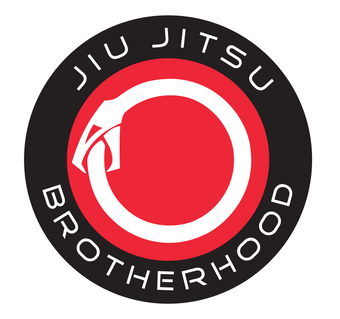This article was written by Marc Barton, who is a 2nd degree Jiu-Jitsu Black Belt under Mauricio Gomes. Marc is the head instructor at Kingston Jiu Jitsu. Header image used on license from Shutterstock.
I have practised martial arts in one form or another now for over 30 years. As a child, I occasionally suffered from bullying, which motivated me to become interested in martial arts as a form of self-defence. I attended ninjitsu classes in my mid-teens and studied karate throughout university and my 20s. Despite many hundreds of hours of training in the dojo, I still had doubts about my ability to defend myself in a confrontational situation, and just after my 30th birthday, I started to attend Jiu-Jitsu classes at the famous Roger Gracie Academy in London. I was immediately drawn to the practicalities of the techniques being taught and loved the heavy emphasis on live sparring. I became hooked and couldn't get enough of this new style of fighting.
Fast forward 15 years, and I am now a full-time Jiu-Jitsu instructor. Like many other Jiu-Jitsu academies, we have a heavy emphasis on competition style techniques and sparring, but I also try to teach practical self-defence regularly. In my opinion, one of the most important aspects of teaching self-defence is to also educate students about its limitations and the consequences of confrontation.
In my previous life, before I became a Jiu-Jitsu instructor, I worked as a doctor, mainly in Emergency Medicine. Over a decade of treating the victims of assaults taught me that the unexplained can happen at any time and that everyone is vulnerable, no matter the skill level or level of martial arts ability. I have witnessed the tiniest of knife wounds kill a man in a matter of minutes, and seemingly innocuous head injuries from an assault leave the injured party with lifelong disability. Street fighting and confrontation are risky activities that should be avoided at all costs, and this seems to be underemphasised by many self-defence teachers.
Fighting Without Fighting
Like many 40 something martial arts enthusiasts, I grew up watching Kung Fu movies and Bruce Lee. One of my favourite scenes from 'Enter the Dragon' is the scene where Bruce describes his martial arts style as the 'art of fighting without fighting'. He beautifully misdirects a confrontational situation by setting the aggressor out to sea in a boat, much to the amusement of everyone else on board. You can watch the scene here:
This is a fantastic example of 'verbal Jiu-Jitsu'; the fight was won without a punch being thrown, and no one was hurt.
Common Approaches
There are many different approaches to the practice of ‘verbal Jiu Jitsu’, and it is well worth trying these out in a class setting. Possible tactics that can be employed include the following:
- Situational awareness and avoidance:
Developing an innate awareness of dangerous situations that could result in conflict is essential. If you see a drunk guy at a bar that is being generally confrontational to people around him, avoid that guy. If you see a group of young men hurling abuse at people, don't get involved. There is a saying in medicine that 'prevention is better than cure', which is definitely the case when it comes to fighting.
- Compromise if you can:
If a situation arises where you have already crossed the line and have entered into an argument, try to placate the aggressor by compromising with him. Don't get drawn into the exchange and feel that you have to disagree; there is often common ground that can be found.
- Change the topic:
If an aggressor is focused on a particular topic that is leading you to an inevitable confrontation, then change the subject. Try and talk about something else that is less negative or emotionally charged.
- Find an exit route:
If things are really turning sour and conversation doesn't appear to be a viable option to settle the situation down, then get the hell out of there. There is no point hanging around and getting into a fight. Make an excuse and leave.
The following video by Sifu Tim Tackett beautifully illustrates these types of avoidance and deflection tactics. The story at the beginning is a cautionary tale that is well worth listening to also:
Practical Self-Defence is Still Important
Self-defence skills are still vitally important, and sometimes there is no way to de-escalate the situation, and conflict is inevitable. These are the situations when your martial arts training will come into full effect. I have no doubt that my many years of training in martial arts has made me a more difficult target for violence, and I am certainly far more capable of defending myself than I was before I started training in Brazilian Jiu-Jitsu. But it is my belief that these situations are less common than the 'social violence' situations where de-escalation can be achieved.
Why not give ‘verbal Jiu Jitsu’ a try at some point over the next couple of weeks, practice in your class or with your friends. It may well prove invaluable to you when you least expect it.










0 comments